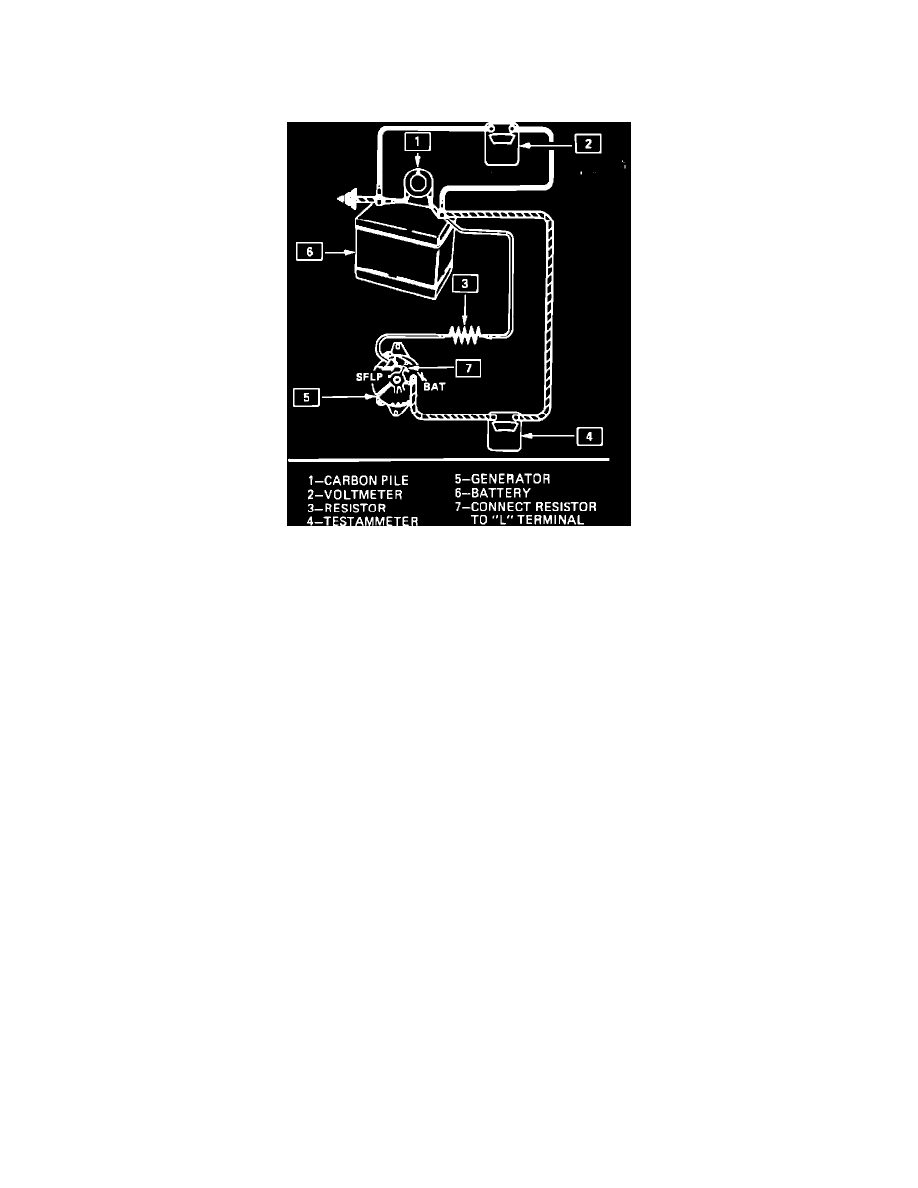Prizm L4-1600cc 1.6L DOHC VIN 6 (1990)

Alternator: Component Tests and General Diagnostics
Bench Testing
Fig. 2 CS Alternator Bench Check
1.
Make connections as shown in Fig. 2, however leave the carbon pile disconnected. The ground polarity of the alternator and battery must be the
same. The battery must be fully charged. Use a 30-500 ohm resistor between battery and L terminal.
2.
Slowly increase alternator speed and observe voltage.
3.
If voltage is uncontrolled and increases above 16 volts, the rotor field is shorted, the regulator is defective or both. A shorted rotor field can cause
the regulator to become defective. Battery must be fully charged when making this test.
4.
If voltage is below 16 volts, increase speed and adjust carbon pile obtain maximum amperage output. Maintain voltage above 13 volts.
5.
If output is within 15 amps of rated output, alternator is satisfactory.
6.
If output is not within 15 amps of rated output, alternator is defective and requires repair.
On-Vehicle Output Test
1.
Connect ammeter in series at alternator output BAT terminal, then connect voltmeter and carbon pile across battery terminal. Ensure battery is
fully charged.
2.
Operate engine at moderate speed. With carbon pile turned Off, check voltage across battery terminals.
3.
If voltmeter reads above 16 volts, repair (CS-144) only or replace alternator.
4.
If voltmeter reads below 16 volts, proceed as follows:
a. With engine still running at moderate speed turn accessories On and load battery with carbon pile to obtain maximum amperage output.
Maintain voltage above 13 volts.
b. If output is within 15 amps of rated output, alternator is satisfactory.
c. If output is not within 15 amps of rated output, alternator is defective and requires repair (CS-144 only) or replace alternator.
